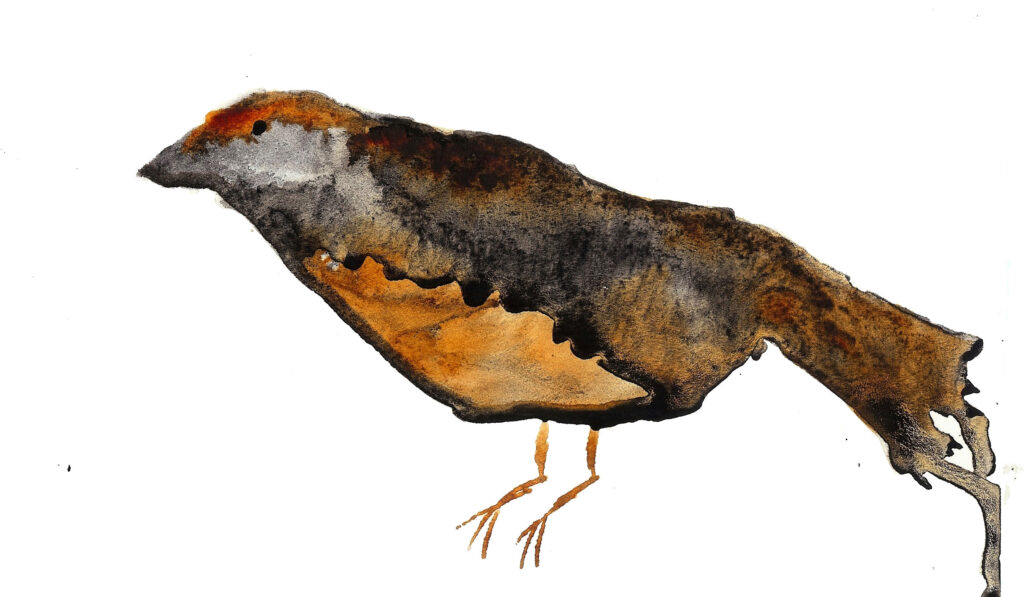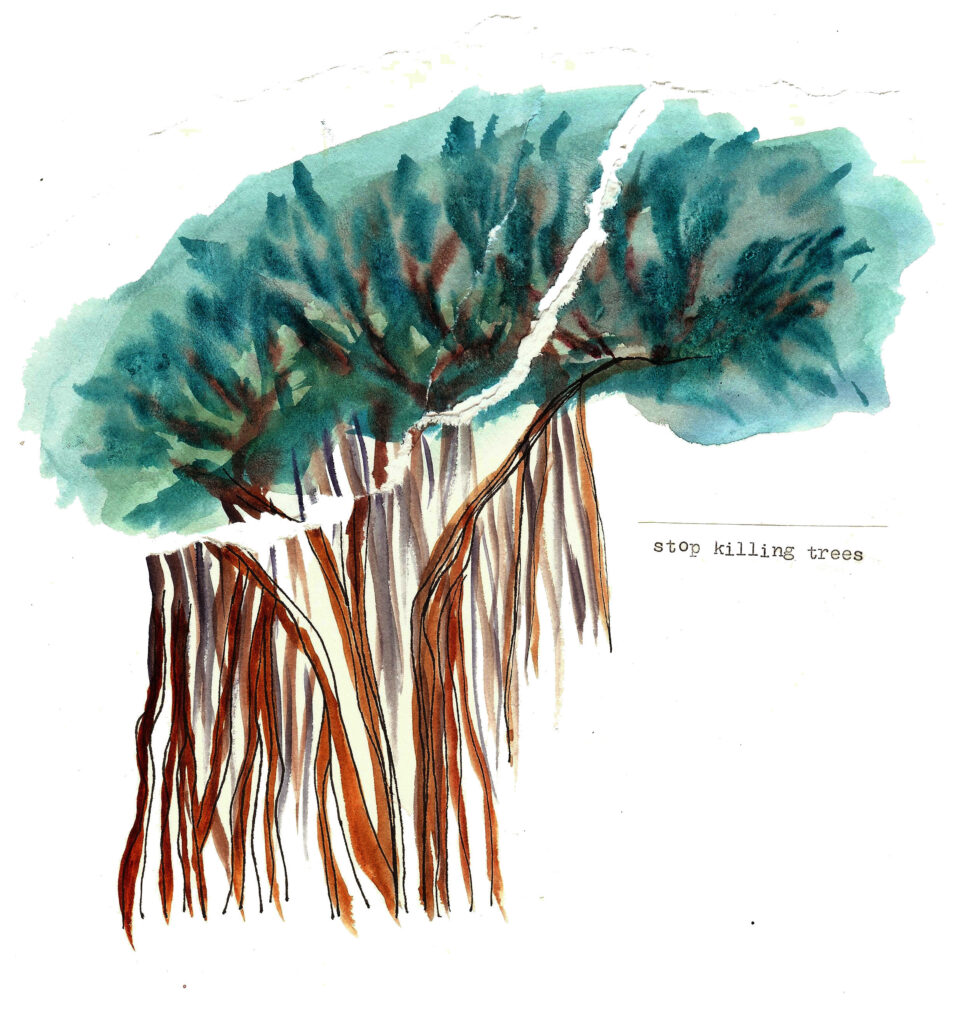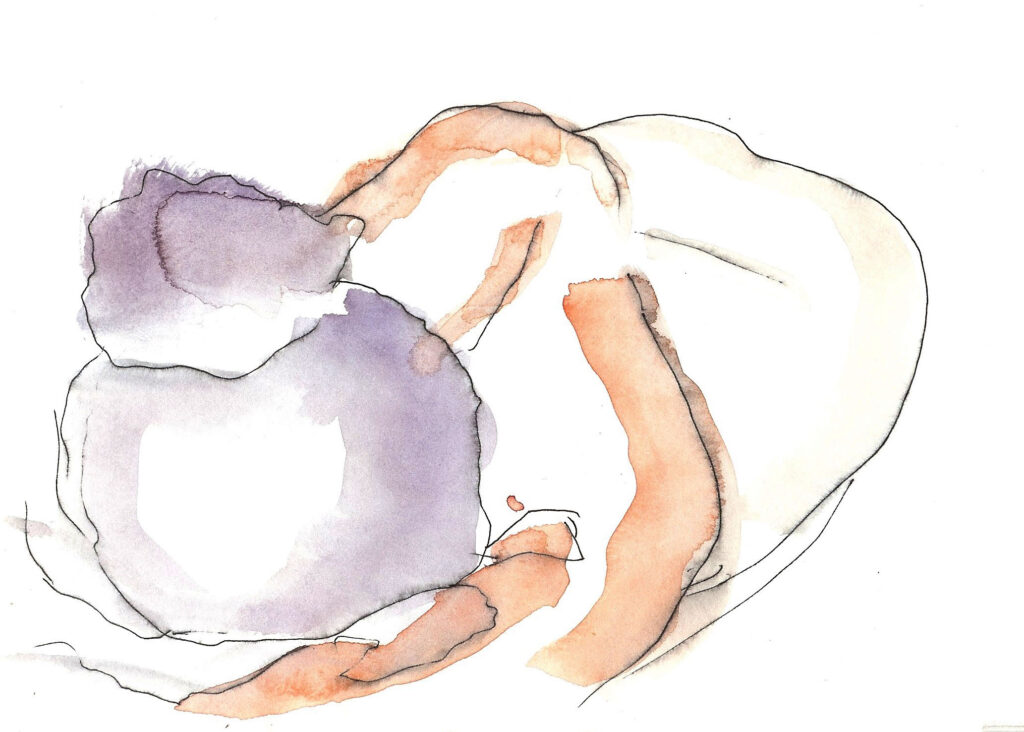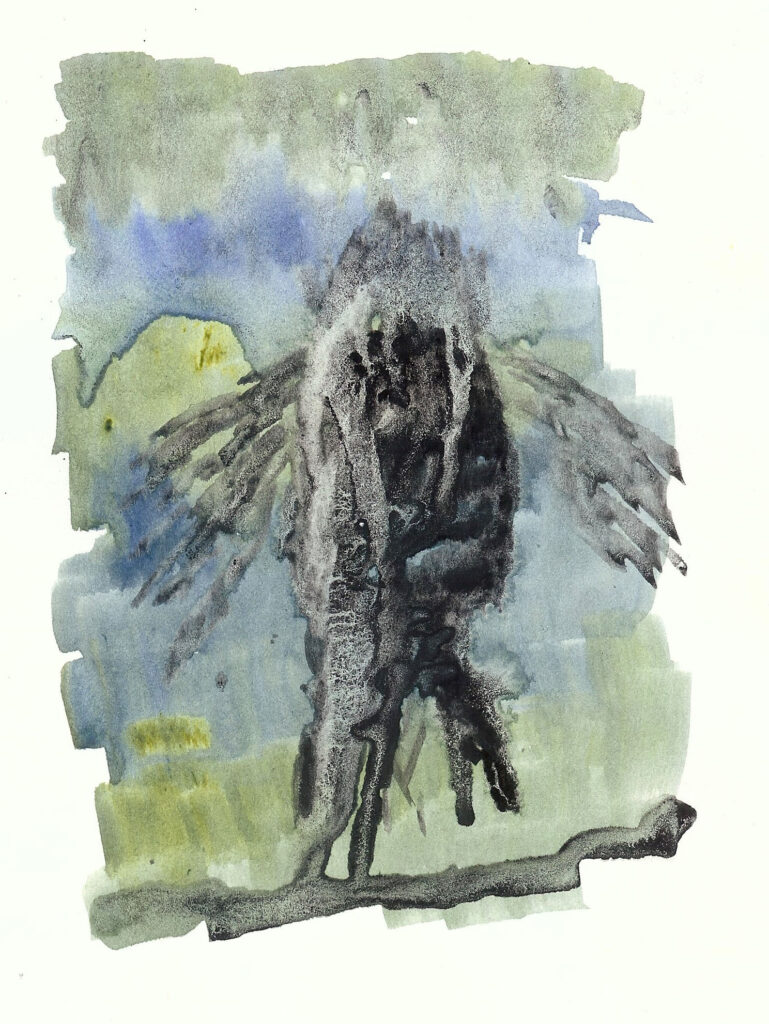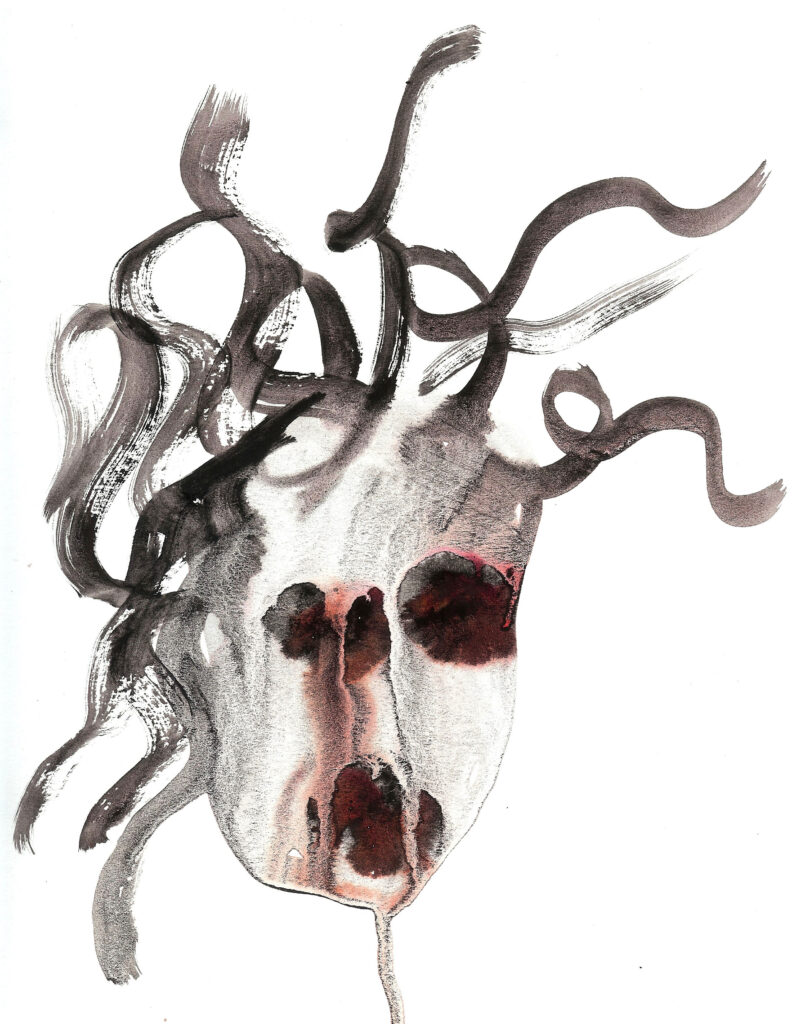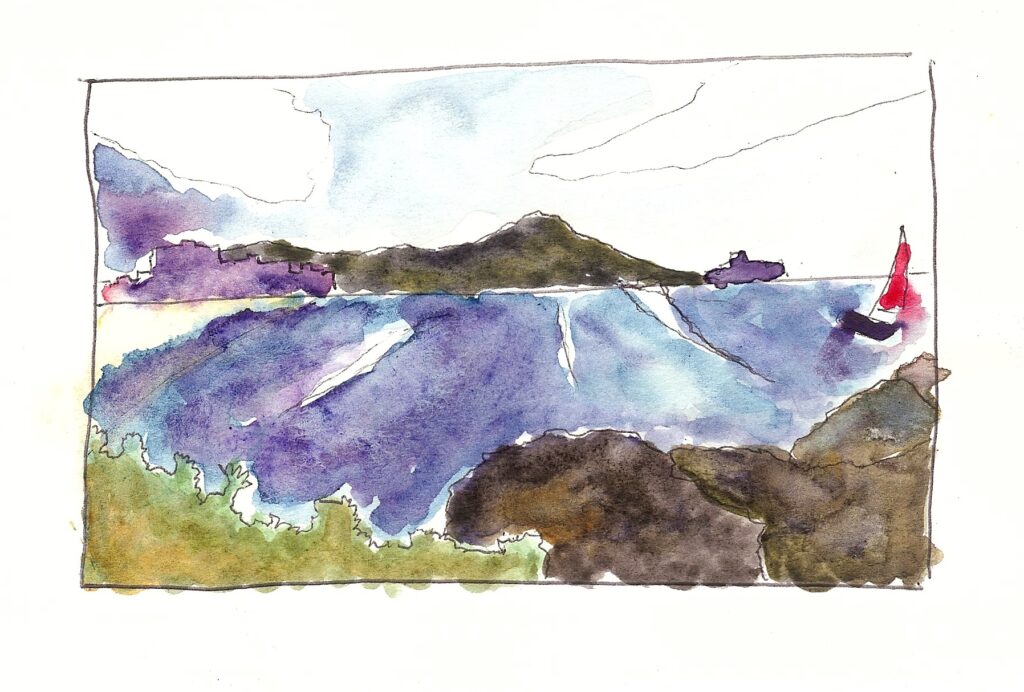There is a a peculiar kind of “madness” in literature and art that seems inherintly female. There’s Ophelia in Hamlet, and Edna Pontellier in The Awakening (more on these two later). Researchers now understand that mental illness may or may not arise in a particular individual for a host of reasons. There’s a genetic component to developing mental illness and also environmental factors, or stressors, that can trigger mental illness (if you want to read more, refer to volume 115, number 8, of the journal of Environmental Health Perspectives for a full article on the subject). The writers explain that mental illnesses “increasingly fall into the realm of environmental health.” A person’s environment: from traumatic experiences, to the food they eat, to the drugs they use, can influence mental health. But environment can be construed far wider than all that, the researchers write. And in light of recent stories about women suffering from mental health crises, I’ve come to wonder whether a culture of misogyny could also be considered an environmental trigger for mental illness. Trauma and environmental stressors like poverty and abuse can make a person more susceptible to mental illness. In identical twins, if one twin develops schizophrenia, the chances of the other twin also developing the disease are 50%. According to Environmental Health Perspectives, people with schizophrenic relatives in their immediate family are at a tenfold risk of developing the disorder. Researchers note that this indicates that the development of schizophrenia may be genetically determined, but just as important, it also suggests that the onset of schizophrenia is also environmentally shaped. Growing up, these facts gave me great concern. I have relatives who have been diagnosed with schizophrenia. Given the variety of environmental stressors that can potentially trigger mental illness, I wonder why I have been resillient, why I didn’t succumb to the most serious symptoms of depression, psychosis, and mania that plague my family once or twice a generation.
My uncle was diagnosed with schizophrenia before I was born. He was later diagnosed with bipolar disorder, and major depressive disorder by the time I was ten years old. I remember his clozapine tremors, his medicated stupors, his regular psychotic breaks that involved shattered windows, panic attacks in the mall, and days when he wouldn’t get out of bed. My mother had some form of untreated, but more functional version of whatever my uncle had. She worked as an operator at a time when you could still push 0 on your phone and talk to a real human. She was excellent at a job that required her to have all the city’s emergency agency numbers memorized, but she also believed that the government was wire-tapping our phone, and that terrorists had strung up invisible wires throughout New York City. She was convinced that my brothers and I would be kidnapped if we were left alone for even a moment, and so I spent most of my childhood locked up at home. My father was a Vietnam Veteran and suffered from undiagnosed PTSD. He’d get triggered, and fly off the rails, throwing things, screaming, breaking dishes, slamming doors, and threatening to leave and never come back. In the worst of his paranoia, he carried a baseball bat wherever he went—even if it was just to throw out the trash or take my brothers and me to the park.
Throughout my youth, I always worried about the monster lying dormant in my genes. The kind of mental illness suffered by members of my family divorced them from reality, from themselves, and transformed them into different people. Growing up, it was like knowing that I had the gene for early-onset dementia, and living always with the lurking risk that one day I’d start forgetting things, forgetting myself.
To make matters worse, when you grow up with mental illness, you grow up with trauma, because mental illness is a destabalizing force. My mother did some “crazy” things to me, but some of the most disturbing things were the ones with misogynistic undercurrents.
In recent months I have wondered whether misogyny could be an environmental factor that can trigger mental illness.
People who got to know my mother called her “mad.” People who knew my uncle called him “mad.” People who knew my dad called him scary crazy. I knew enough about inheritance as a child to figure that I was probably crazy myself.
Given my family, and the embarrassing things I often endured as a result of living with sick people, by the time I was a teenager, I’d given up. I embraced “crazy.” Crazy bitch was my own personal brand, my own label. I knew I couldn’t avoid it, so I might as well embrace it.
Literature is populated by an entire nation of “crazy” and “mad” women. There’s Ophelia, who goes “mad” in the middle of Hamlet. Ophelia is often depicted as one of Shakespeare’s archetypal “crazy” women, but I don’t see her as so crazy now. She was less a woman suffering from psychosis than a woman manipulated and led astray by the men around her. She listened to her brother and father, and they ruined her relationship with the love of her life. She trusted Hamlet, and he betrayed her. Laertes tells her to be chaste, while he goes off and has sex with everything that moves, and Ophelia is quick to comment on the double standard.
“I shall the effect of this good lesson keep,
As watchman to my heart. But, good my brother,
Do not, as some ungracious pastors do,
Show me the steep and thorny way to heaven;
Whiles, like a puff’d and reckless libertine,
Himself the primrose path of dalliance treads,
And recks not his own rede.”
William Shakespeare, Hamlet
Ophelia is a woman put in an impossible position. She loses the love of her life if she listens to her family, and she’s a whore who loses her family if she doesn’t listen. Can you blame her for wanting a way out?
As a teenager, I read the entire cannon of mad young women. Sylvia Plath was my poetic muse who gave me great comfort, Girl, Interrupted by Susanna Kaysen was my bible, and Mary Karr’s memoirs (Lit, being my favorite) corroborated the narrative that successful female writers were all “mad” in some way; I might as well embrace it and join the “crazy” fold. I was introduced to Virginia Woolf through the biographical fact that she had killed herself. I read a “Room of One’s Own” through that tragic lens. She would have her room in the end; it would be a coffin.
In high school, for AP English, we read The Awakening, and by the end, I couldn’t help but think that Edna Pontellier made the only logical choice available to her. There was no way out of her situation but to swim out to sea to die. Emily Dickinson avoided suicide, but she was a recluse. Toni Morrison wrote about ghosts.

Women who put themselves out there, who dare to make art, or literature, or poetry, or anything for that matter, are always a little crazy, aren’t they? How else could one deal with the forces of sexism, misogyny, and outright theft by more established men and institutions? You have to be a little nuts to keep trying. When your voice is small, you’ll need a lot of amplification to get credit for the work you’re doing. A young female artist will have to resign herself to working in the shadows for years, often fighting powerful forces that will either ignore her good ideas, or worse, steal them.
Perhaps we need to take this difficulty seriously as a real environmental stressor.
In recent years, we’ve heard of the concept of “amplification.” Amplification is a strategy that women in the Obama White House used to help each other get credit for good ideas, and to ensure that their good ideas were heard. Vox reports that if a woman made a good point in a meeting, or presented a good idea, the other women in the room would repeat it, and credit the source. This ensured that the idea wasn’t later appropriated by the men in the room, or worse, ignored. This was the Obama White House. I don’t see Obama as a particularly misogynistic guy. We’re just so used to ignoring women that we don’t consciously hear their ideas. We’re so used to undervaluing women’s input that when they come up with a good new idea we think we’ve thought it up ourselves.
I recently watched a documentary about the life and art of Yayoi Kusama, called Kusama: Infinity, which is currently streaming on Hulu. It’s a marvelous documentary. The film highlights the real struggle that female creators face, not only from the outright sexism in their respective fields, but also the constant threat of the outright theft of their ideas.
Kusama’s story is far more tragic than most. While Kusama always seemed to have a predisposition to divergent thinking (she experienced delusions in childhood), it wasn’t until her ideas were stolen repeatedly that she became suicidal. Schizophrenia tends to develop later in life, so I don’t think Kusama experienced mental illness as such as a child. I truly believe that something happened to her that changed her brain.
Misogyny happened to her, possibly racism too.
Throughout the documentary we learn about how Kusama would put on an installation, and then have that same idea replicated by a better-established man, who would then get all the credit, money, and fame. The documentary makes a strong case for Kusama’s genius—and is a strong indictment on the men and institutions who blatantly took her ideas.
In 1962, Kusama showed Accumulation No. 1, a chair covered in soft penile protrusions (imagine a bunch of socks sewn onto a chair). It’s a simple concept, but entirely original, and wholly quirky. A few months later, in the same gallery, Claes Oldenberg put up a show featuring his “soft” sculptures; he had been working with paper before this. People commented on how “interesting” it was that he chose to take up sewing, a feminine medium. Interesting indeed. His shift to soft sculpture was seen as revolutionary, but of course he got the idea from Kusama. He became an international celebrity, and Kusama continued to languish in relative obscurity.
Kusama kept trying. She covered a gallery with a thousand boats in wallpaper, in an installation piece called Aggregation: One Thousand Boats Show at the Gertrude Stein Gallery. After failing once, she took her concept a step further. Kusama didn’t just cover a boat in soft protrusions, she covered the whole gallery wall with the image of her idea. Was Kusama using the idea of amplification to claim ownership of her concept? Surely, no one would try to steal it, right? That would be crazy. Andy Warhol came to the show and saw it. He liked it. Warhol would go on to wallpaper a room at the Leo Castelli Gallery in cows.
The final straw was when Kusama created an installation called Infinity Mirror Room (Phalli’s Field) in March 1965. Here, Kusama took the idea of covering furniture and mundane objects in soft protrusions and amplified this concept to encompass the entire room. But she knew that the room wouldn’t be enough. It’s never enough. So she installed mirrors and amplified the room to infinity.
This time, she’ll finally get credit for her idea, right? You can’t amplify something more than infinity, after all.
The piece was revolutionary and stunningly beautiful.
In October of that same year Lucas Samaras “originated” the “Mirrored Room” at the Pace Gallery. He became famous.
This is when Kusama became suicidal. She was later institutionalized.
Lucas Samaras ended up in my high school art history book, representing contemporary conceptual art. Where was Kusama? Institutionalized. Crazy. Mad.
Who wouldn’t be?
Women who tell the truth, who challenge authority, who take risks are easily labelled crazy and mad. If they are crazy, they shouldn’t be believed, shouldn’t be taken seriously. A sick society will pathologize normal behavior as a means of control.
The normal response to an insane society will be crazy behavior. It’s the insane response of a sick society to pathologize normal behavior.
In a recent piece about Sinead O’Connor and her new book, Rememberings, the critic Rachel Hass writes in the New York Times: “Crazy is a word that does some dirty cultural work. It is a flip way of referencing mental illness, yes. But it’s also a slippery label that has little to do with how a person’s brain works and everything to do with how she is culturally received. Calling someone crazy is the ultimate silencing technique. It robs a person of her very subjectivity.”
Our culture appears to be in a place where it is re-assessing its propensity to throw crazy women in the proverbial “mad house.” Today, there isn’t a mad house, but there’s cancellation and conservatorship. There’s a movement to free Britney Spears from the conservatorship that stole her life and control over her career (I’ve written about this in my article on Compliant Women in Contemporary Writing). Now, it seems, we’re ready to look at Sinead O’Connor through new eyes, ready to re-assess her “insanity,” for tearing up that picture of the pope, just as we are now willing to re-think whether Britney Spears was so crazy, after all for shaving her head and getting pissed at the paparazzi. O’Connor explains that she shaved her head in response to music executives telling her she should look pretty. I’ve always believed that Spears’ move to shave her own head came from a similar place. But we’ll never know until Spears is allowed to speak.
I’ll always be one crazy bitch. I embrace my family’s mental illness as a shared struggle, and as a hidden superpower. Non-consensus views of reality can be incredibly creative and beautiful. They can lead to new ways of seeing. They can’t be easily imitated.
Non-normative thinking is my heritage, it is my culture.
In traditional or indigenous societies, the non-normative in the group became healers, hermits, shaman, or poets, often seen as being in touch with other realms, celebrated for their vision, for their difference. In our culture, they are medicated to stupor, or locked away, or vilified, or infantilized under court ordered patriarchy. Take a walk through Chinatown here in Hawai’i and you’ll see what I mean.
I believe I’ve passed the critical window during which environmental triggers could awaken the mental illness genes that I know lie dormant in my DNA. I wonder why I have am been so resistant. Did my creative writing and art-making as a teen make my mind flexible and resistant, like doing mental yoga? Since I was a young child, I’ve always been incredibly active. As a fifth grader I asked my dad to take me to the high school track so I could train for a six-minute mile. In sports I’ve always been a bridesmaid, never the bride–showing some promise, but never having the guidance or stamina to take my abilities too far. But I’ve kept moving all along. Did that stop me from developing schizophrenia?
Am I just lucky? I’ll never know.
I hereby diagnose myself with the human condition.
When environmental stressors get me down, I get to work. Last April (2020), as the COVID-19 pandemic shut down the world and put everyone in a dormant state, I started a book review blog in Hawai’i in the middle of a pandemic, at a time when no one was really reviewing books in Hawai’i in an in-depth manner. It was a crazed response to a world gone mad. If all I could do was sit at home and read, I might as well make something of it. In most places, there are enough critics. But in Hawai’i, I saw a need.
But critics are like roaches. Light a fire and more come out of the woodwork. There’s a lot of noise out there. This writing thing can sometimes feel like a shout out into the wilderness.
Some days I want to shave my head, but like Kusama, I keep writing.
Hold that one up to an infinity mirror, boys.
Really. Please do. When you’re a mirror, another mirror just makes you boundless.
About the Writer
Janice Greenwood is a writer, surfer, and poet. She holds an M.F.A. in poetry and creative writing from Columbia University.


